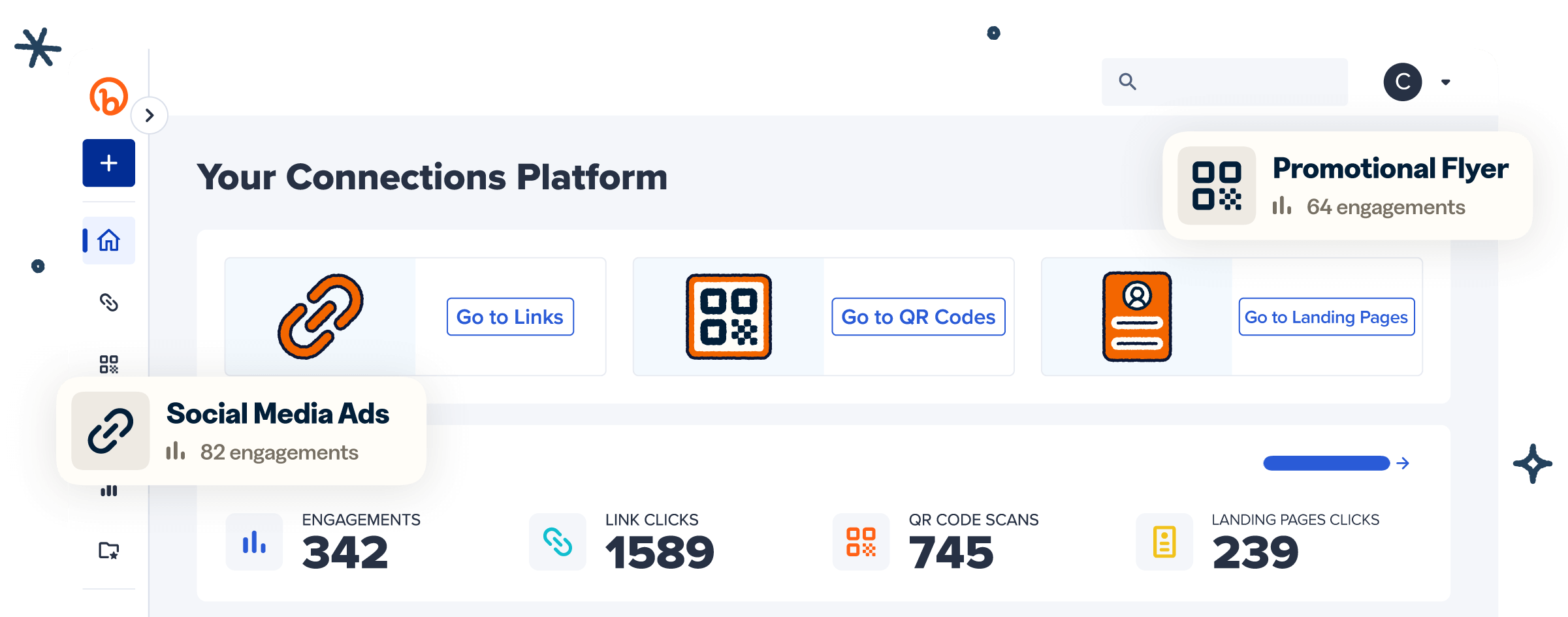So, you’ve meticulously planned your latest SMS marketing campaign, pouring hours of creativity and effort into crafting the perfect segmented messages.
But despite your best intentions, the results are underwhelming.
Chances are, you’ve made one—or more—of the most common SMS marketing mistakes. Read on to discover what they are and how to avoid them once and for all.
What is SMS marketing?
SMS marketing is a powerful tool for reaching your audience directly through their mobile phones with targeted, timely promotional messages.
You can unveil exclusive deals, nudge customers with abandoned-cart reminders, spark excitement with event invites, and more. Great SMS marketing campaigns empower businesses to engage with their customers in real time and forge deep connections.
Why avoiding SMS marketing mistakes should be a priority
For all its potential, SMS marketing isn’t easy—and little mistakes can have significant repercussions.
For one, sending unsolicited text messages can swiftly tarnish a brand’s reputation. Not only can these messages irritate customers, but they can even lead to hefty compliance penalties.
But it’s not just about reputation—it’s about engagement, too. Trust is the cornerstone of great customer relationships, and every SMS misstep weakens that bond.
Last, don’t forget about your bottom line. Inefficient SMS practices can zap resources and diminish returns. From broken links to neglected segmentation, small mistakes can greatly impact your campaign’s effectiveness.
12 common SMS marketing mistakes to watch out for
Now you know what’s at stake, here are the 12 most common SMS marketing mistakes to watch out for.
1. Not getting explicit consent through opt-ins
Obtaining explicit consent for this communication channel is about more than following the rules—it’s about building trust. Without it, you risk losing your audience.
Properly obtaining and documenting consent is key to demonstrating compliance and fostering trust with your subscribers.
To do this, make it easy for subscribers to opt-in to your SMS notifications and make sure you emphasize the benefits of signing up.
As McKinsey research shows, 57% of customers are happy to receive discounts or offers in exchange for the use of their data. So show people why opting in is worth their while!
2. Sending messages at the wrong times
Sending SMS messages at the wrong times can result in missed opportunities and decreased engagement.
But mastering the art of timing takes, well, time. You’ll need to gather data on your audience’s behavior and preferences, being mindful of customers in different time zones.
The idea is to get a data-driven understanding of your audience’s schedule so you can pinpoint optimal send times.
3. Overloading subscribers with messages
Bombarding your SMS list with too many messages is a surefire way to look spammy, alienate your target audience, and increase opt-out rates.
So, when it comes to message frequency, prioritize quality over quantity. Your goal is a cadence that provides value without overwhelming your audience.
To find the sweet spot for your business, think about the nature of your business, your subscribers’ preferences, and industry norms. Start by testing different frequencies and monitoring engagement metrics to find what works best.
4. Not personalizing your text messages
Deloitte research shows that personalized text message marketing communications drive much higher engagement than generic ones. It’s easy to see why.
By crafting messages that resonate with each recipient on a personal level, you demonstrate that you understand their unique preferences and needs. This fosters a deeper connection and increases the likelihood of conversion.
How do you weave personalization into your SMS marketing messages? It starts with the basics—addressing recipients by name. It’s a small gesture that grabs attention.
But that’s just the beginning. For hyper-personalization, you can tailor your SMS text messages to their interests and past interactions. For example, you could offer limited-time offers based on their browsing history or purchase behavior.
You can even surprise customers with personalized offers on their birthdays, creating moments of genuine connection that leave a lasting impression.
5. Ignoring message content quality
With just 160 characters, you need to ensure your SMS messages capture attention and drive action quickly and concisely. Every single word counts. Here’s what to keep in mind:
- Get to the point: Customers are more likely to read and act on concise messages.
- Focus on delivering value: Make sure your message offers something worthwhile, like a welcome text, coupon, or limited-time offer.
- Use active language: Your SMS should prompt a specific action from the recipient.
6. Not adding a clear call to action
Your audience is busy, and their attention is fleeting. A clear and actionable CTA compels them to action, increasing the likelihood of an immediate conversion.
Here are a few irresistible examples of clear CTAs:
- “Order Now”
- “Claim Your Discount”
- “Discover More”
- “Use Promo Code”
7. Forgetting to include clear opt-out options
Offering an easy opt-out option for SMS is a requirement under regulations like the E.U.’s General Data Protection Regulation (GDPR) and the U.S.’s Telephone Consumer Protection Act (TCPA). Not only that, but a lack of opt-out options can also damage your brand’s reputation, eroding trust with your audience.
With that in mind, it’s crucial to make opting out as simple and transparent as possible. Include clear instructions on how to unsubscribe in every message, whether by replying with a specific keyword or clicking a link.
Beyond that, make sure the opt-out process is easy to find and navigate, with no hidden hurdles or roadblocks. Always respect your recipients’ choices—promptly honor opt-out requests and remove them from your messaging list to ensure compliance and maintain trust.
8. Sending text messages to inactive numbers
Keeping your contact list fresh and updated matters—both from cost and legal perspectives.
For one, every message sent to an inactive phone number is essentially lost to the void. That means wasted resources with no chance of engagement.
Beyond the financial toll, there are potential legal pitfalls to consider. Regulations like GDPR and TCPA mandate that you only send messages to recipients who have consented to receive them. If a number is reassigned, you could unintentionally communicate with someone who never opted in.
To combat this risk, regularly clean and update your list. Implement a process for removing inactive numbers from your list and periodically reconfirm consent with existing subscribers to ensure ongoing compliance.
9. Poorly segmenting your audience
Great SMS marketing strategies build meaningful, long-lasting connections with recipients based on relevant, personalized communication.
To achieve that level of impact, you need to segment your audience accurately and effectively. That means tailoring your messages to specific demographics, behaviors, and preferences. This is the key to using SMS for business growth.
Start by identifying key demographic characteristics, like location and gender, to create broad segments. Then, dive deeper into behaviors and preferences, using data-driven insights to create more targeted groups.
From there, you can consider factors like purchase history, engagement level, and interests to tailor your messages to each segment’s unique needs. Finally, don’t forget to periodically review and refine your segments to ensure they remain relevant and effective long term.
10. Using long, jumbled URLs
Long, messy URLs are hurdles on the road to engagement. They clutter your messages, put off your recipients, and distract from your intended call to action.
In contrast, when you harness short, concise URLs, you enhance readability and streamline the user experience.
With Bitly’s URL shortener for SMS, you can quickly and easily shorten long URLs into compact, trackable links that are perfect for text messages.
Not only do Bitly Links save space, but they also monitor your audience engagement, showing how many taps they receive over time, where customers are interacting from, the devices they use, and where they’ve been referred from. These data-driven insights help you improve the effectiveness of your SMS marketing efforts.
11. Ignoring analytics and feedback
Crafting and sending SMS messages is just the beginning. What’s even more important is tracking and analyzing SMS campaign performance.
By monitoring metrics like open rates, response rates, click-through rates, and conversion rates, you gain valuable insights into the effectiveness of your campaigns. This allows you to identify what’s working, what’s not, and where there’s room for improvement.
Start by identifying patterns and trends in your data. What messages resonate most with your audience? Which calls to action drive the highest engagement? Use this information to inform your strategy and optimize your messaging for maximum impact.
Not sure how to uncover this kind of data? Bitly can help. With Bitly Analytics, you gain comprehensive insights into SMS link performance. This means you can seamlessly track the success of your shortened links in real time, allowing you to make data-driven decisions and refine your approach accordingly. You can also use Bitly alongside other analytics platforms like Google Analytics for even more powerful, well-rounded data like click-through rates, conversions, bounce rates, and more.
12. Not A/B testing your messages
Embracing A/B testing delivers opportunities for campaign optimization. By experimenting with elements like subject lines, tone of voice, and calls to action, you can iterate your campaigns to increase conversions.
To run an A/B test, design your test with a single variable in mind, such as the wording of your message, the timing of your send, or the design of your call to action.
Next, split your audience into randomized groups and send each group a different message variation. At the end of the test, you’ll have two different results—one of which will likely be more effective than the other. Use the winning message to refine your strategy and enhance your future campaigns.
Need some guidance? Check out our comprehensive SMS marketing guide.
Perfect your SMS marketing strategy with Bitly
Crafting a successful SMS marketing strategy is crucial for driving engagement and fostering lasting customer loyalty. However, the common mistakes outlined above can derail your efforts and hinder campaign success.
With Bitly by your side, you can optimize your SMS campaigns and sidestep these mistakes effortlessly. From streamlining message tracking to enhancing link performance, Bitly’s tools empower you to maximize your impact and achieve unparalleled results.
Ready to elevate your SMS marketing game? Unlock the full potential of your campaigns with Bitly today.


